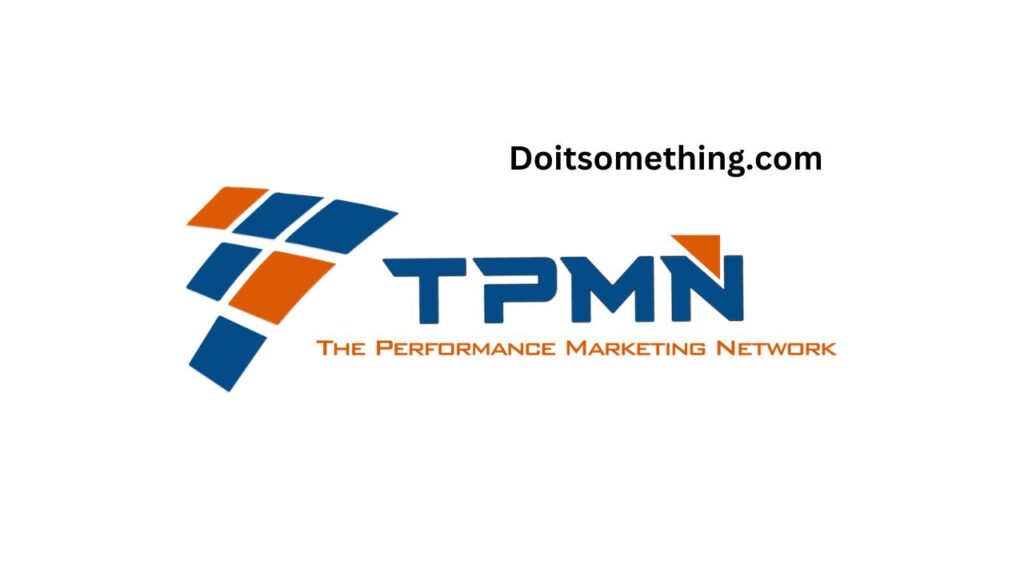Performance Marketing Network [2023] | Do It Something

Doitsomething.com (1)
Performance Marketing Network
Do you know about Performance Marketing Network? Then this essay should be read by you. Learn more below.
The Performance Marketing Network (PMN) refers to a type of marketing network that is focused on performance-based advertising and affiliate marketing.
Also read about Envyus Media Affiliate Program.
In this type of network, advertisers (also known as merchants or brands) partner with publishers (also known as affiliates) to promote their products or services.

In a PMN, advertisers typically pay publishers based on the performance of their ads, such as the number of clicks, leads, or sales generated. This differs from traditional advertising models where advertisers pay for ad placement regardless of the outcome.
PMNs often use tracking technology to check and measure the performance of ads, which allows advertisers to track their ROI and adjust their campaigns accordingly. Publishers also enjoy the performance-based model, as they have the potential to earn higher commissions by promoting successful campaigns.
Some popular PMNs include CJ Affiliate, Rakuten Marketing, and ShareASale. These networks offer a platform for advertisers and publishers to connect and manage their campaigns, as well as access to reporting and analytics tools.
What is Performance Marketing?
Performance marketing is a type of online marketing in which advertisers pay for specific actions taken by users, such as clicks, conversions, or other desired behaviors. Unlike traditional advertising models, which rely on impressions or views, performance marketing focuses on measurable results and is highly targeted to specific audiences.
Performance marketing campaigns typically involve tracking and measuring the performance of specific marketing channels or campaigns, such as search engine advertising, social media advertising, or email marketing. Advertisers use key performance indicators (KPIs) such as cost-per-click (CPC), cost-per-acquisition (CPA), or return-on-investment (ROI) to test the effectiveness of their campaigns and optimize their marketing spend.
Performance marketing is popular among businesses of all sizes, as it allows them to maximize their advertising budgets by targeting only those users who are most likely to take the desired action, such as making a buy or signing up for a service. It is also highly flexible, allowing advertisers to adjust their campaigns in real time based on performance data and optimize their strategies for the greatest results.
How Performance Marketing Works
Performance marketing is a type of online marketing where advertisers pay for specific actions taken by users, such as clicks, conversions, or other desired behaviors. Here is how performance marketing typically works:
- Set Goals and Define KPIs: The advertiser sets specific goals for the campaign and defines key performance indicators (KPIs) to measure success. KPIs might include cost-per-click (CPC), cost-per-action (CPA), or return on investment (ROI).
- Create and Deploy Ads: The advertiser creates ads that are targeted to a specific audience based on demographics, interests, or other criteria. Ads might be displayed on search engines, social media, or other online platforms.
- Track Performance: The performance of the ads is tracked using web analytics tools, which check user behavior and track conversions and other desired actions.
- Optimize the Campaign: Based on the performance data, the advertiser adjusts the campaign in real-time to optimize for the greatest performance. This might include tweaking ad copy or targeting criteria, adjusting bid prices, or changing the landing page design.
- Pay for Performance: The advertiser pays only for the desired actions taken by users, such as clicks or conversions. This allows advertisers to optimize their spending and ensure that they are getting a positive return on investment.
Performance marketing is a highly targeted and flexible approach to online advertising that allows advertisers to maximize their advertising spend and achieve specific business goals. It is popular among businesses of all sizes, from small startups to large corporations, and is widely used across a range of industries and sectors.
Top Performance Marketing Channels
There are several performance marketing channels that are commonly used to promote products and services and drive conversions. Here are some of the top performance marketing channels:

- Search Engine Marketing (SEM): Search engine marketing involves placing ads on search engines such as Google or Bing. Advertisers bid on keywords and pay each time a user clicks on their ad. This can be an effective way to reach users who are actively searching for products or services related to the advertiser’s business.
- Social Media Advertising: Social media advertising involves placing ads on social media platforms such as Facebook, Instagram, or LinkedIn. Advertisers can target specific demographics, interests, or behaviors and pay each time a user clicks on their ad or takes a specific action.
- Affiliate Marketing: Affiliate marketing involves partnering with publishers or influencers who promote the advertiser’s products or services in exchange for a commission on each sale or conversion. This can be an effective way to reach new audiences and drive conversions through trusted third-party endorsements.
- Email Marketing: Email marketing involves sending targeted messages to users who have subscribed to the advertiser’s mailing list. Advertisers can track opens, clicks, and conversions and optimize their campaigns for the greatest performance.
- Display Advertising: Display advertising involves placing ads on websites or mobile apps. Advertisers can target specific audiences based on demographics, interests, or behaviors and pay each time a user clicks on their ad or takes a specific action.
These are just a few examples of top-performance marketing channels. The specific channels and strategies used may vary depending on the advertiser’s business goals, target audience, and budget.
Benefits of Performance Marketing
There are several benefits of performance marketing that make it an attractive option for advertisers looking to drive conversions and maximize their return on investment. Here are some of the key benefits of performance marketing:

- Targeted Audience: Performance marketing allows advertisers to target specific audiences based on demographics, interests, or behaviors. This means that advertisers can reach the right people with the right message, increasing the likelihood of driving conversions.
- Measurable Results: Performance marketing campaigns are highly measurable, allowing advertisers to track the performance of their campaigns in real time. Advertisers can see which ads are driving the most clicks or conversions and adjust their campaigns accordingly to optimize for the greatest performance.
- Cost-Effective: Performance marketing is typically cost-effective, as advertisers only pay for the desired actions taken by users, such as clicks or conversions. This means that advertisers can optimize their spending and ensure that they are getting a positive return on investment.
- Flexibility: Performance marketing is highly flexible, allowing advertisers to adjust their campaigns in real time based on performance data. Advertisers can tweak their targeting criteria, adjust bid prices, or change their ad copy to optimize for the greatest results.
- Wide Range of Channels: Performance marketing can be used across a wide range of channels, from search engine advertising to social media advertising to affiliate marketing. This means that advertisers can choose the channels that work best for their business and target their audiences where they are most likely to convert.
These are just a few of the benefits of performance marketing. The specific benefits will vary depending on the advertiser’s business goals, target audience, and budget, but performance marketing can be a highly effective way to drive conversions and achieve specific business objectives.
What is Performance-Based Advertising?
Performance-based advertising is a type of online advertising where the advertiser pays only for specific actions taken by users, such as clicks, conversions, or other desired behaviors. This is in contrast to traditional advertising models where advertisers pay a fixed rate for ad placement, regardless of how many clicks or conversions are generated.
Performance-based advertising is typically used in conjunction with performance marketing campaigns, where the advertiser sets specific goals and KPIs for the campaign and pays only for the desired actions taken by users. This allows advertisers to optimize their spending and ensure that they are getting a positive return on investment.

Some common types of performance-based advertising include:
- Cost-per-Click (CPC): Advertisers pay each time a user clicks on their ad. This is commonly used in search engine advertising and social media advertising.
- Cost-per-Action (CPA): Advertisers pay each time a user takes a specific action, such as filling out a form or making a buy. This is commonly used in affiliate marketing and other types of performance marketing campaigns.
- Cost-per-Impression (CPM): Advertisers pay for each impression of their ad, regardless of whether the user clicks on the ad. This is commonly used in display advertising.
Performance-based advertising is a highly targeted and flexible approach to online advertising that allows advertisers to optimize their spending and achieve specific business goals. It is becoming increasingly popular among businesses of all sizes, from small startups to large corporations, and is widely used across a range of industries and sectors.
How Performance Advertising Works?
Performance advertising works by allowing advertisers to set specific goals and KPIs for their advertising campaigns and pay only for the desired actions taken by users. Here’s a general overview of how performance advertising works:
- The advertiser sets goals: The advertiser sets specific goals and KPIs for their advertising campaign, such as driving clicks, conversions, or other desired actions.
- An advertiser creates ads: The advertiser creates ads that are designed to achieve their campaign goals, such as search engine ads, social media ads, display ads, or affiliate marketing ads.
- Ads are placed: The ads are placed on relevant channels, such as search engines, social media platforms, websites, or affiliate marketing networks.
- Users interact with ads: Users see the ads and interact with them in various ways, such as clicking on them, filling out forms, or making purchases.
- Performance is tracked: The performance of the ads is tracked in real time, with data on clicks, impressions, conversions, and other relevant metrics being collected and analyzed.
- Payments are made: The advertiser pays for the desired actions taken by users, such as clicks or conversions, based on the specific performance-based advertising model being used.
- The campaign is optimized: The campaign is optimized based on the performance data collected, with adjustments being made to targeting, ad creative, bid prices, and other factors to optimize for greatest results.
By focusing on specific performance metrics and paying only for the desired actions taken by users, performance advertising allows advertisers to optimize their spending and achieve specific business goals. It is a highly targeted and flexible approach to advertising that is becoming increasingly popular among businesses of all sizes and across a range of industries and sectors.
Fast Track Your Career in Digital Marketing
If you’re looking to fast-track your career in digital marketing, there are several steps you can take to gain the skills and experience you need to succeed. Here are some tips to help you speed up your career in digital marketing:

- Get certified: There are several certifications available in digital marketing, such as Google Ads and Analytics certifications, HubSpot Inbound Marketing Certification, and Facebook Blueprint Certification. Earning these certifications demonstrates your expertise and commitment to the field, and can help you stand out to employers.
- Build a portfolio: Building a portfolio of your work can help you showcase your skills and experience to potential employers. This could include examples of campaigns you’ve run, websites you’ve optimized, or social media accounts you’ve managed.
- Network: Networking is key in any industry, and digital marketing is no exception. Attend industry events, join digital marketing groups on social media, and connect with other professionals in the field to expand your network and learn from others.
- Stay up-to-date: Digital marketing is a rapidly-evolving field, so it’s important to stay up-to-date on the latest trends and technologies. Follow industry blogs and publications, attend webinars, and take courses to keep your skills and knowledge current.
- Specialize: Digital marketing is a broad field, so specializing in a specific area can help you stand out to employers and clients. Consider specializing in areas such as SEO, PPC advertising, social media marketing, or content marketing.
By taking these steps, you can fast-track your career in digital marketing and position yourself for success in this exciting and dynamic field.
FAQ – Performance Marketing Network
Performance marketing works when advertisers connect with either agencies or publishers to design and place advertisements for their company on any number of performance marketing channels — social media, search engines, videos, embedded web content, and more.
Technically it seems like affiliate marketing and performance marketing are the same things. Still, there’s a different approach to each, and performance marketing includes so much more. Affiliate marketing in itself may not ensure the consumer will buy your product or service.
Performance marketing is all about measurable results, which can be tracked using specific metrics such as cost per acquisition (CPA) and return on investment (ROI). In contrast, digital marketing is about creating awareness and building relationships with customers, which can be more difficult to measure.
Conclusion
A marketing network with a focus on performance-based advertising and affiliate marketing is known as a “Performance Marketing Network” (PMN).
In this kind of network, publishers (also referred to as affiliates) work with advertisers (sometimes referred to as merchants or brands) to market their goods or services.
Publishers are often compensated by advertisers in a PMN based on the effectiveness of their ads, such as the number of clicks, leads, or sales they produce.
This article should have made it clearer how to use The Performance Marketing Network Please let us know in the comments area if you have any questions.







